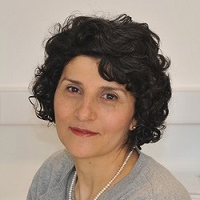Selected Papers from the 2nd International Conference of Marine Fungal Natural Products (MaFNaP_2017)
A special issue of Marine Drugs (ISSN 1660-3397).
Deadline for manuscript submissions: closed (31 May 2019) | Viewed by 16530
Special Issue Editors
Interests: marine natural product chemistry; marine microbiology; deep-sea organisms; structure elucidation; bioactivity; cancer; infectious diseases
Special Issues, Collections and Topics in MDPI journals
Interests: natural products chemistry; metabolomics; bioactivity; marine fungi; halogenated secondary metabolites; mass spectrometry; bioinformatics
Special Issues, Collections and Topics in MDPI journals
Special Issue Information
Dear Colleagues,
Fungi have played a significant role in both ancient and modern biotechnology. Not only products, such as the blockbuster antibiotics and anticancer drugs, alcohols, enzymes, organic acids, but also many processes, including baking or brewing heavily use fungi. Filamentous fungi from marine resources are recently emerging as excellent resources for cutting edge research and numerous applications (health, food, cosmetics, biofuels, etc.). However, we still know very little about marine fungi and their natural products (MaFNaPs). A comprehensive and interdisciplinary research is urgently needed.
The 2nd MaFNaP conference was organized in Kiel (Germany) by GEOMAR Centre for Marine Biotechnology (GEOMAR-Biotech) - Research Unit Marine Natural Products Chemistry (GEOMAR Helmholtz Centre for Ocean Research Kiel) on 27-29 June 2017. The initiative for a systematic work on marine fungi and MaFNaPs stems from the meeting of scientists in Prince Edward Island, Canada, that was followed by the official establishment of the MaFNaP Consortium in 2014. The very first MaFNaP conference was held in 2015 and hosted by the Faculty of Pharmacy of the University of Nantes (France). A Marine Drugs Special Issue comprising selected papers from this conference are available at https://www.mdpi.com/journal/marinedrugs/special_issues/fungal-consortium. The 2nd MaFNaP_2017 conference in Kiel has stimulated scientific interactions, networking and collaborations for innovative research to reveal the real capacity of marine fungi.
The MaFNaP_2017 conference topics were diverse and include many subjects that are highly relevant and complementary to marine fungal products, including marine fungal biodiversity, cultivability, genomics, epigenetics, ecology and physiology, marine fungal interactions, chemodiversity, analytics and metabolomics, biodiscovery and biotechnology.
MaFNaP conferences are dedicated to bring together marine fungal research community together. On behalf of the MaFNaP consortium and the scientific committee of the MaFNaP_2017 conference, we kindly invite submission in these topics, plus any topic related to marine fungal natural products.MaFNaP_2017 Web Site: http://www.geomar.de/en/research/fb3/fb3-mn/symposia/mafnap2017/#c27886
Marine Fungal Natural Products Consortium: http://www.mafnap.org/
Prof. Dr. Deniz TasdemirDr. Catherine Roullier
Guest Editors
Manuscript Submission Information
Manuscripts should be submitted online at www.mdpi.com by registering and logging in to this website. Once you are registered, click here to go to the submission form. Manuscripts can be submitted until the deadline. All submissions that pass pre-check are peer-reviewed. Accepted papers will be published continuously in the journal (as soon as accepted) and will be listed together on the special issue website. Research articles, review articles as well as short communications are invited. For planned papers, a title and short abstract (about 100 words) can be sent to the Editorial Office for announcement on this website.
Submitted manuscripts should not have been published previously, nor be under consideration for publication elsewhere (except conference proceedings papers). All manuscripts are thoroughly refereed through a single-blind peer-review process. A guide for authors and other relevant information for submission of manuscripts is available on the Instructions for Authors page. Marine Drugs is an international peer-reviewed open access monthly journal published by MDPI.
Please visit the Instructions for Authors page before submitting a manuscript. The Article Processing Charge (APC) for publication in this open access journal is 2900 CHF (Swiss Francs). Submitted papers should be well formatted and use good English. Authors may use MDPI's English editing service prior to publication or during author revisions.
Keywords
- Marine fungi
- Marine fungal natural products







